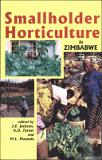| dc.contributor.author | Shambare, C. | |
| dc.coverage.spatial | Zimbabwe. | en |
| dc.date.accessioned | 2016-03-09T12:36:34Z | |
| dc.date.available | 2016-03-09T12:36:34Z | |
| dc.date.issued | 1997 | |
| dc.identifier.citation | Shambare, C. (1997) Resource use and environmental sustainability: horticulture in relation to other forms of land, water and human-resource usage and impact on water resources and soil erosion. In: Jackson, J.E., Turner, A.D. and Matanda, M.L. (eds.) Smallholder horticulture in Zimbabwe. Harare: UZ Publications, pp. 10-19. | en |
| dc.identifier.isbn | 0908307616 | |
| dc.identifier.uri | https://opendocs.ids.ac.uk/opendocs/handle/20.500.12413/9946 | |
| dc.description | A research paper on resource uptake and environmental management for rural development in Zimbabwe. | en |
| dc.description.abstract | Smallholder commercial horticulture programmes aimed at the production of coffee, fruit and other vegetables were introduced into Zimbabwe at Independence in 1980 as one of the Government of Zimbabwe’s major goals of creating employment among communal people through agricultural activity.
The Eastern Highlands Communal Areas were chosen as pilot areas for this purpose. Funding was obtained from the European Economic Community (EEC) and management has been by the Agricultural and Rural Development Authority (ARDA).
There is very serious pressure for land in the communal areas today and this is likely to increase with the increase in population. In the ARDA project areas, land holding sizes average about 1.3 ha per household and therefore the use of intensive methods of farming becomes imperative if the communal land dwellers are going to depend on the land for survival. The pressure on this land has made it even more vulnerable to damage as land unsuitable for cultivation is used for this purpose and the clearing of vegetation for wood and for cultivation has only worsened the situation. This has necessitated the use of more elaborate and labour intensive methods of soil conservation but we have also, through experience gained in our project field work, realized that labour, in spite of growing population, is not as abundant in communal areas as one would be made to believe. This apparent shortage of labour also exacerbates the situation. | en |
| dc.language.iso | en | en |
| dc.publisher | University of Zimbabwe (UZ) Publications | en |
| dc.rights.uri | http://creativecommons.org/licenses/by-nc-nd/3.0/ | en |
| dc.subject | Environment | en |
| dc.subject | Rural Development | en |
| dc.subject | Water | en |
| dc.title | Resource use and environmental sustainability: horticulture in relation to other forms of land, water and human-resource usage and impact on water resources and soil erosion | en |
| dc.type | Book chapter | en |
| dc.rights.holder | University of Zimbabwe (UZ) | en |


